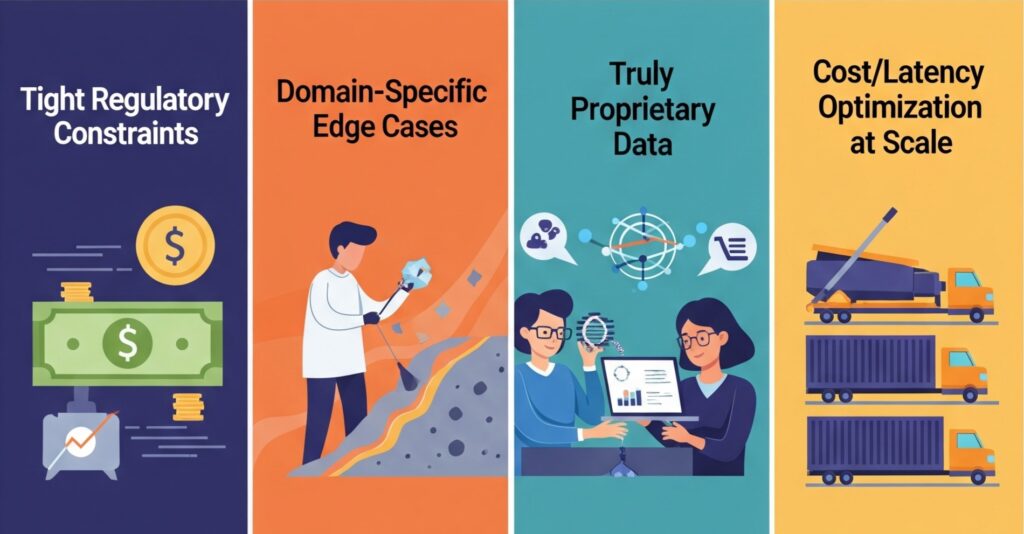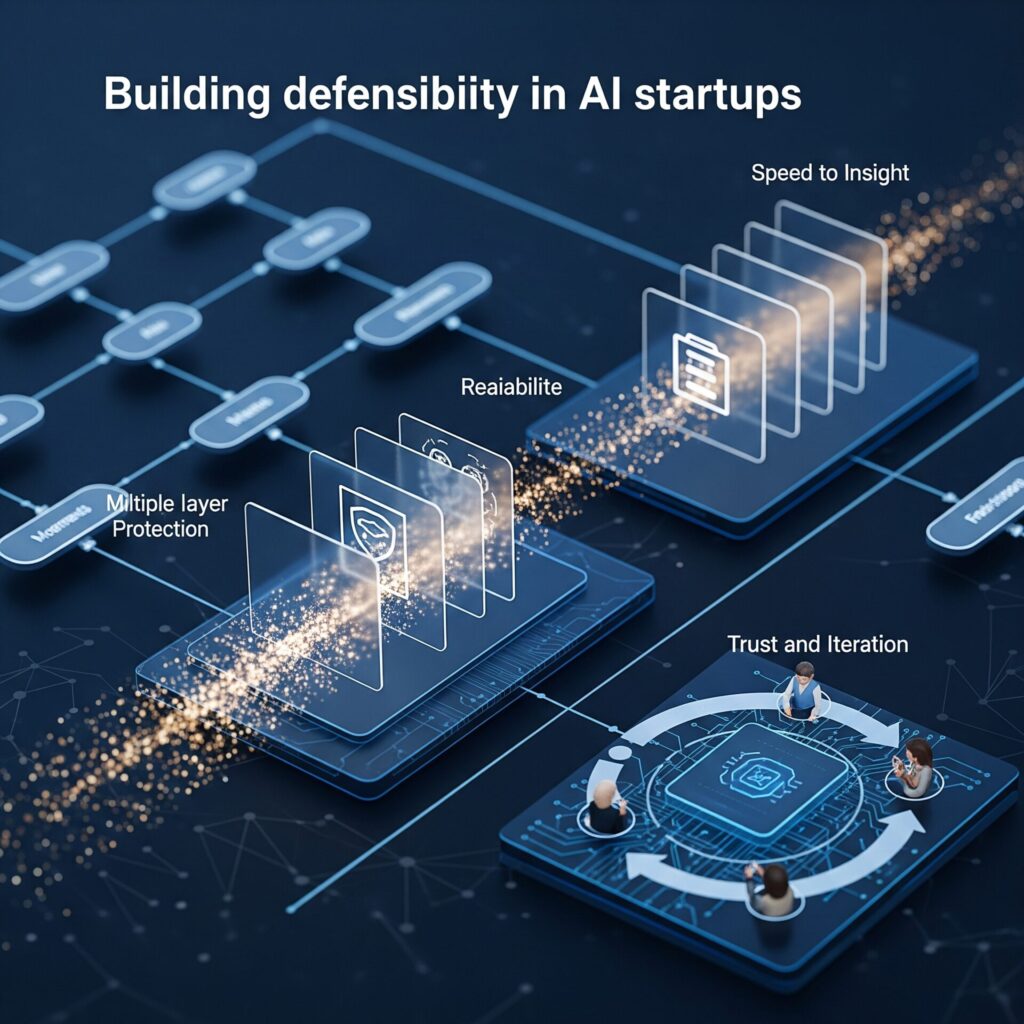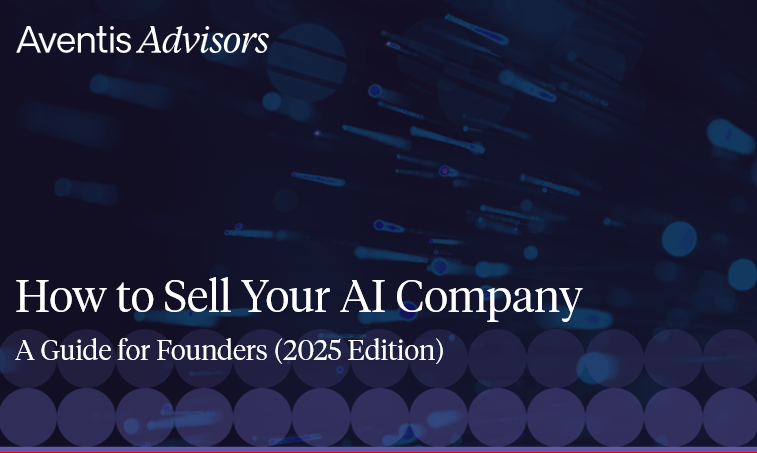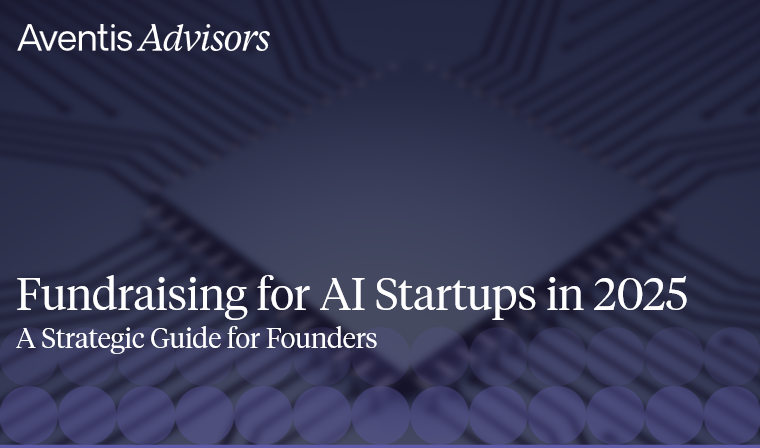Introduction
In the AI world — particularly among startups — saying “we built our own model” is often seen as a golden ticket: a fast track to funding, credibility, and market status. Many high-growth companies chase proprietary models, assuming this technical edge will set them apart.
What many founders miss is this: being technically original isn’t the same as being strategically smart. In most cases, building a proprietary model isn’t just unnecessary — it’s actively counterproductive, even though such startups are often valued highly. Some AI startups achieve a larger valuation through perceived technical differentiation, even if their revenue remains limited. A company’s valuation is frequently driven by the perception that owning a unique model guarantees future success, which leads to soaring valuations even when revenue is limited.
Valuation Multiples: What Investors Are Paying For
The AI sector commands some of the highest revenue multiples seen in the tech industry, largely fueled by expectations of rapid future growth and strategic market positioning. Recent data shows that the median enterprise value (EV) to revenue multiple for AI startups is approximately 29.7x. These multiples are calculated by dividing a company’s enterprise value by its revenue, using financial data such as stock prices, revenue, or EBITDA to quantify company worth. This means investors often value companies at nearly 30 times their current revenues, reflecting strong confidence in scalability and transformative potential.
However, it’s important to note that these multiples primarily come from capital raise rounds, where optimism and market momentum tend to inflate valuations. When it comes to M&A exits, founders should anticipate more conservative multiples, often significantly lower than funding rounds. Additionally, deal values in private transactions are often more conservative and harder to benchmark, as accurate deal value data can be difficult to obtain. Understanding this distinction helps temper expectations and guides more realistic valuation conversations during the sale process.
In the AI sector, a company’s valuation often reflects not just current financials but also growth potential, market positioning, and strategic advantages. Investors and founders should consider both traditional metrics—like revenue and EBITDA multiples—and forward-looking measures such as discounted cash flow (DCF) analysis to gauge scalability and risks. Investors and founders calculate and compare values across different deals to benchmark company worth and inform negotiations. Recent funding rounds illustrate how valuation multiples for AI startups have expanded rapidly, fueled by expectations of transformative growth rather than current earnings alone, with these values calculated based on expectations of growth.
Why Proprietary Doesn’t Mean Competitive for AI Startups
There are a few core problems with equating proprietary models with strategic advantage:
- Performance doesn’t scale with cost. Training your own model might sound exciting, but unless you’re operating at massive scale, you’ll likely spend more money in cash outflows, which can negatively impact profitability for startups, for results that are worse than open alternatives. Companies must also consider both revenues and earnings when evaluating the impact of proprietary model development on financial outcomes.
- Models are becoming infrastructure. Today’s best-performing models — GPT-4, Claude, Mistral, LLaMA — are widely accessible through APIs or open-weight releases. Their capabilities are advancing faster than most startups can keep up with.
- Most users don’t care. They want reliability, speed, and results. Whether that comes from your own model or someone else’s is irrelevant, as long as the job gets done well.
- Training your own model requires significant capital expenditures. The investment in hardware, data, and engineering resources can be substantial, making it a challenging path for most companies.
Example: A productivity tool using GPT-4 to summarize long documents doesn’t win because it built its own LLM. It wins because it seamlessly plugs into Dropbox, offers one-click summaries, and remembers user preferences. That’s workflow value — not model invention.
Effective valuation in these cases often involves analyzing the enterprise value relative to revenues and earnings, ensuring investments in proprietary tech translate into measurable business outcomes rather than just inflated market perception. A company’s worth is determined by a combination of innovation, market opportunity, and tangible results.
When Custom Models Do Make Strategic Sense
That’s not to say model development is always a mistake. In some situations, it can be the right move. Companies often assess whether investing in custom models aligns with their strategic goals and long-term value:
- Tight regulatory constraints: In sectors like healthcare or government where strict control over data is non-negotiable, owning the entire pipeline (including the model) becomes a requirement.
- Domain-specific edge cases: If you’re working in an extremely narrow field — like early-stage drug discovery or geological analysis — public models may not deliver accurate or useful results.
- Truly proprietary data: If you have a dataset no one else can replicate, it may be worth investing in a lightweight model that’s fine-tuned around it — not for performance, but for control.
- Cost/latency optimization at scale: For companies processing millions of queries per day, it can make financial sense to switch from API-based billing to self-hosted inference — after product-market fit is achieved.
Valuing these decisions often requires projecting future cash flows and assessing whether upfront capital expenditures will be outweighed by operational savings or revenue gains, commonly through discounted cash flow or multiples-based methods.
Scale and growth considerations: When evaluating custom models, revenue growth and market traction are key factors in determining a company’s worth, especially in sectors where future potential can outweigh current financials.
But these are the exceptions. Most companies claiming “we’re building our own foundation model” don’t fall into these categories. They’re building for prestige, not purpose.

Where the Real Leverage Is: Application, Not Infrastructure
Instead of chasing technical complexity, high-performing AI startups are quietly focusing on something else entirely: workflow dominance. These companies are driving innovation and demonstrating the transformative potential of AI by changing how businesses operate and compete.
They’re not training billion-parameter models. They’re embedding intelligence into very specific use cases, with AI companies advancing technology across different industries and sectors. These efforts are shaping the broader AI ecosystem. AI-driven innovations are transforming industries such as healthcare, finance, and cybersecurity by fundamentally reconfiguring their landscapes.
Real-world examples:
- A legal AI tool that highlights risk clauses for lawyers working under UK jurisdiction, offering specialized services to legal professionals.
- A marketing platform that generates product descriptions, aligns tone of voice, and syncs directly with a Shopify backend, enabling businesses to leverage machine learning for efficient and high-quality content generation.
- A contract review system that flags vendor mismatches based on procurement policy — not just language patterns — with strong network security measures to protect sensitive data.
These companies win because they understand exactly what their users need, and they design systems — not just outputs — around that. Their innovative solutions are transforming their respective fields and setting new industry standards.
The “Wrapper” Debate Is a Distraction
There’s a lot of dismissive talk about AI products being “just wrappers” around public models. But that’s a shallow way to look at product design.
Most successful tech products are wrappers around something:
- A rideshare app wraps logistics and payments around a phone’s GPS.
- A CRM wraps communication tools and sales logic around a database.
- A design tool wraps user input around rendering engines.
In AI, what matters isn’t whether you’re wrapping a model. It’s how well you wrap it. The key is to focus on the aspects that deliver real value—such as integrating domain expertise, optimizing for user needs, and ensuring seamless workflow integration.
A thin layer with no context or feedback loops? That’s just a demo. A thoughtful layer that encodes expertise, simplifies the user’s decision-making, and fits into real workflows? That’s a business.
The critical role of design, user experience, and risk management here cannot be overstated. Effective risk assessment—such as minimizing hallucinations and ensuring compliance with regulatory standards—builds trust, which is a major valuation driver for AI companies.
Example: Notion AI isn’t defensible because it has unique models — it doesn’t. It’s defensible because the company augments an already sticky product with helpful AI tools that support user workflows right where users are writing, thinking, and planning.
How to Build Defensibility Without Owning a Model
Here’s where smart AI startups are placing their bets:
- Workflow depth: Understanding what the user is really trying to do — not just what button they click.
- Reliability layers: Wrapping models with rules, validations, and fallback mechanisms to prevent hallucinations and improve accuracy.
- Speed to insight: Not just generating content, but helping users make data-driven and informed decisions faster and with more confidence.
- Trust and iteration: Earning user trust by solving their problem repeatedly, then expanding outward once trust is established.
Companies that gain access to proprietary datasets or specialized technology platforms can further strengthen their defensibility and boost their valuation. Access to unique resources, such as large datasets or specialized databases, is often a key differentiator for investors evaluating AI startups.
These strategies not only improve product-market fit but also help demonstrate to investors a clear path to sustainable growth and valuation uplift. Investors heavily weigh evidence of recurring revenue, client retention, and growth trajectory, which underpin company valuation multiples and investment attractiveness.

The Right Question Isn’t “What Can We Build?” — It’s “What Should We Not?”
Startups don’t need to impress with deep stacks of IP. They need to deliver value with elegance and efficiency. It’s crucial to maintain focus on genuine investment opportunities and areas of strategic interest when deciding whether to build proprietary models.
If you’re considering building a model, pause and ask:
- Are we doing this because it makes the product better — or because it makes our pitch deck look stronger?
- Could we ship faster, cheaper, and more reliably by using off-the-shelf models and focusing on system design?
- Will this investment move the needle for our users — or just for our ego?
Remember that investors may pay a premium for startups that show clear strategic advantages or transformative potential, especially when supported by robust financial models like DCF valuation or by benchmarking comparable AI deals.
Own the Outcome, Not the Model
The most important thing an AI startup can do is to make the model invisible. Users don’t want to think about weights, tokens, or layers — they want to solve problems.
Let the labs build the infrastructure. Let your startup own the result.
Market Analysis and Research: Understanding the Playing Field
In the fast-moving world of artificial intelligence, market analysis and research are not just nice-to-haves—they’re essential for survival and success. For AI startups and established companies alike, understanding the playing field means more than just tracking competitors; it’s about decoding market dynamics, identifying valuation trends, and spotting where the next wave of growth will come from.
Investors rely on deep analysis of valuation multiples, revenue multiples, and other financial metrics to assess a company’s valuation and its potential for future growth. Access to comprehensive company details—including names, niches, deal specifics, valuation multiples, deal sizes, buyer-target details, and sector insights—is crucial for accurate benchmarking and analysis. By keeping a close eye on market trends within the AI ecosystem, companies can gain valuable insights that inform everything from product strategy to fundraising tactics.
This kind of data-driven approach helps businesses position themselves for higher valuations and seize investment opportunities before the rest of the market catches on. It also enables better risk assessment, helping companies mitigate threats from market volatility or regulatory changes. However, obtaining reliable information from private companies remains a significant challenge compared to public ones, due to limited disclosure and data availability.
The artificial intelligence sector is evolving at breakneck speed, with new technologies and business models emerging constantly. Larger deals in the AI sector can set new benchmarks for valuation multiples and influence investment strategies across the industry. Companies that prioritize thorough market research are better equipped to anticipate shifts in the sector, adapt to changing customer needs, and avoid costly missteps. Ultimately, a strong grasp of market analysis is a critical role for any company aiming to lead in the AI space—helping founders and investors alike make informed decisions that drive growth and maximize value.
Risk Assessment and Management in AI Startups
Operating in the AI sector means navigating a landscape defined by both high growth and high risk. For AI startups, effective risk assessment and management are not optional—they’re fundamental to long-term success. Investors and founders must look beyond the hype and rigorously evaluate the company’s business model, revenue growth trajectory, and the competitive environment.
One of the most powerful tools for this is discounted cash flow (DCF) valuation, which allows investors to estimate a company’s present value based on expected future cash flows. This approach helps quantify both the upside and the risks, factoring in everything from capital expenditures to market volatility.
By using DCF valuation and other financial metrics, companies and investors can make smarter, data-driven decisions about where to allocate money and how to maximize value.
Risk management in AI also means proactively addressing potential threats—whether it’s network security vulnerabilities, regulatory changes, or sudden shifts in market demand. High-growth companies that build robust risk management strategies are better positioned to weather uncertainty and capitalize on new opportunities as they arise. Strategic acquisitions of data centers and AI infrastructure can also serve as an effective way to manage risk and accelerate growth, as these high-profile deals often drive innovation and reshape the industry landscape. In a sector where the stakes are high and the pace is relentless, a disciplined approach to risk is what separates the winners from the rest.
Why you need a Technology M&A Advisor for your AI company
Keeping track of AI valuations provides valuable insights into market trends and helps you time your exit strategy effectively. However, every company is unique, just as every founder’s journey is unique. Therefore, it’s crucial to seek guidance from experts in the AI M&A space, particularly M&A advisors who specialize in the technology sector and can understand your specific situation.
Technology M&A advisors possess deep knowledge of market dynamics, valuation methodologies, and the intricacies of the M&A process. While you focus on managing your business, advisors diligently ensure that every detail is addressed and advocate for the best possible deal on your behalf. Technology M&A advisors success is intertwined with yours, and their expertise can often significantly influence the final sale price.
About Aventis Advisors
Aventis Advisors is an M&A advisor focusing on technology and growth companies. We believe the world would be better off with fewer (but better quality) M&A deals done at the right moment for the company and its owners. Our goal is to provide honest, insight-driven advice, clearly laying out all the options for our clients – including the one to keep the status quo.
Get in touch with us to discuss how much your business could be worth and how to maximize the valuation.




